Air fryers vs convection ovens: experts decode culinary confusion
Can't tell your air fryers from your convection ovens? We lay it all out so you can learn the difference
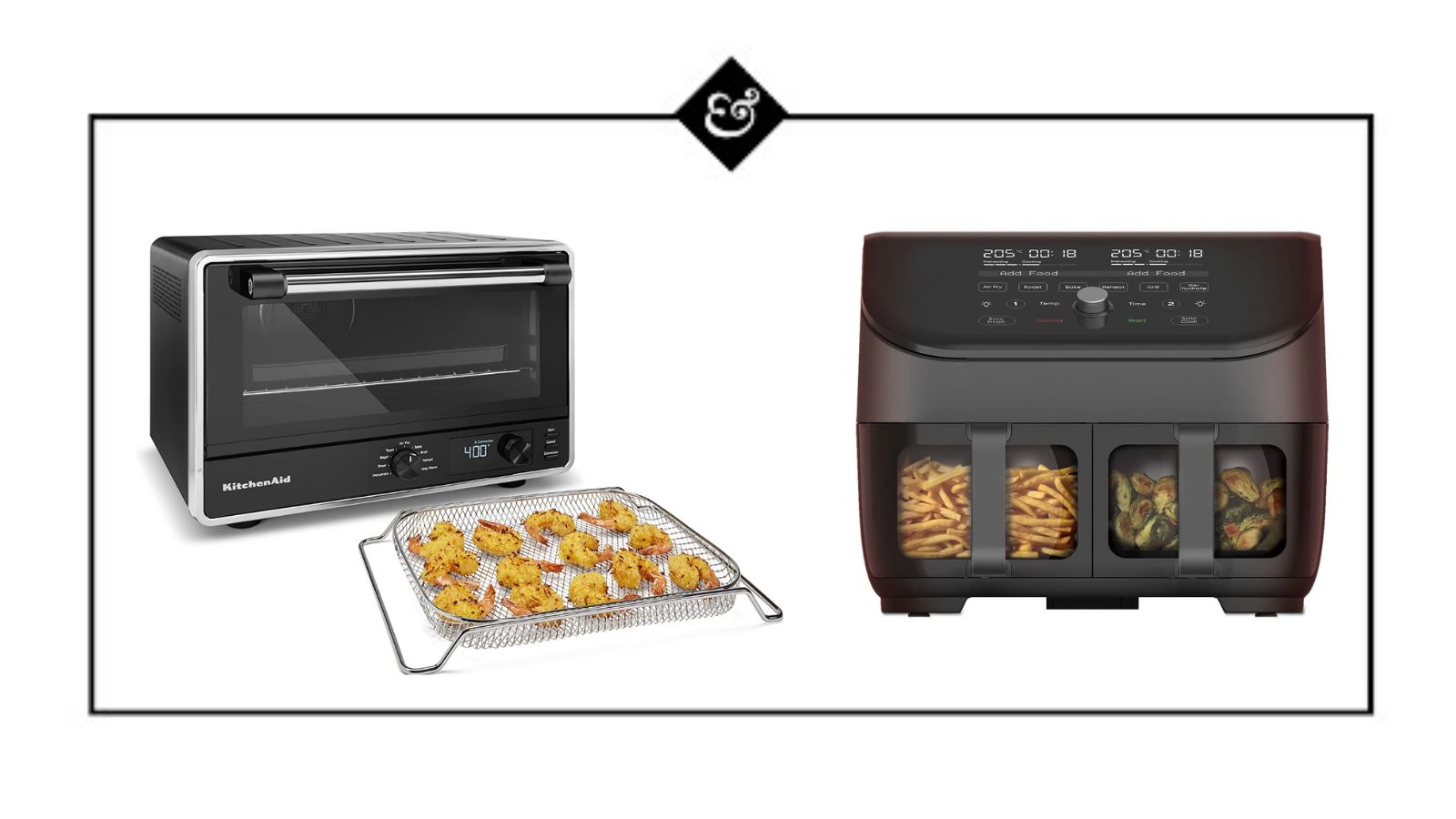

Lots of readers need the lowdown on air fryers vs convection ovens. Since they exploded onto the market a few years ago, air fryers have been one of the most sought after kitchen appliances you can buy.
However, I've seen a lot of confusion about what air fryers actually are, and if there's any difference between them and convection ovens. Some people think the same thing, and I've seen others say that they're completely different appliances.
Both are wrong, and we can get into the detail below thanks to hands-on experience with these handy kitchen helpers. With this guide, you can learn the exact difference, and which appliance best suits your needs.

Alex is our Head of eCommerce, testing and and reviewing products and finding deals. Trained at the Good Housekeeping Institute, he has lots of experience with small appliances, baking, roasting, dehydrating and toasting his way through the best air fryers and convection ovens you can buy.
What is a convection oven?
The basic definition is that a convection oven has a heating element and a fan to blow heat around. The fan makes the oven more efficient. Easy.
The confusion comes with the fact that 'convection oven' applies to a wide range of appliances.
What is an air fryer?
An air fryer can both bake and roast your food with top-located heating elements and a fan. This results in crispy food that has much less oil needed than with other cooking methods.
What's the difference?
Here, we make plain the differences between air fryers and convection ovens.
1. Inbuilt convection ovens

A convection oven. The fan at the back circulates heat
This is an oven built into your kitchen, either as a wall oven or combined with a range. Unlike conventional ovens, which heat up from the bottom by using gas or electricity, convection ovens have two heating elements at the top and bottom and a fan.
2. Countertop convection ovens
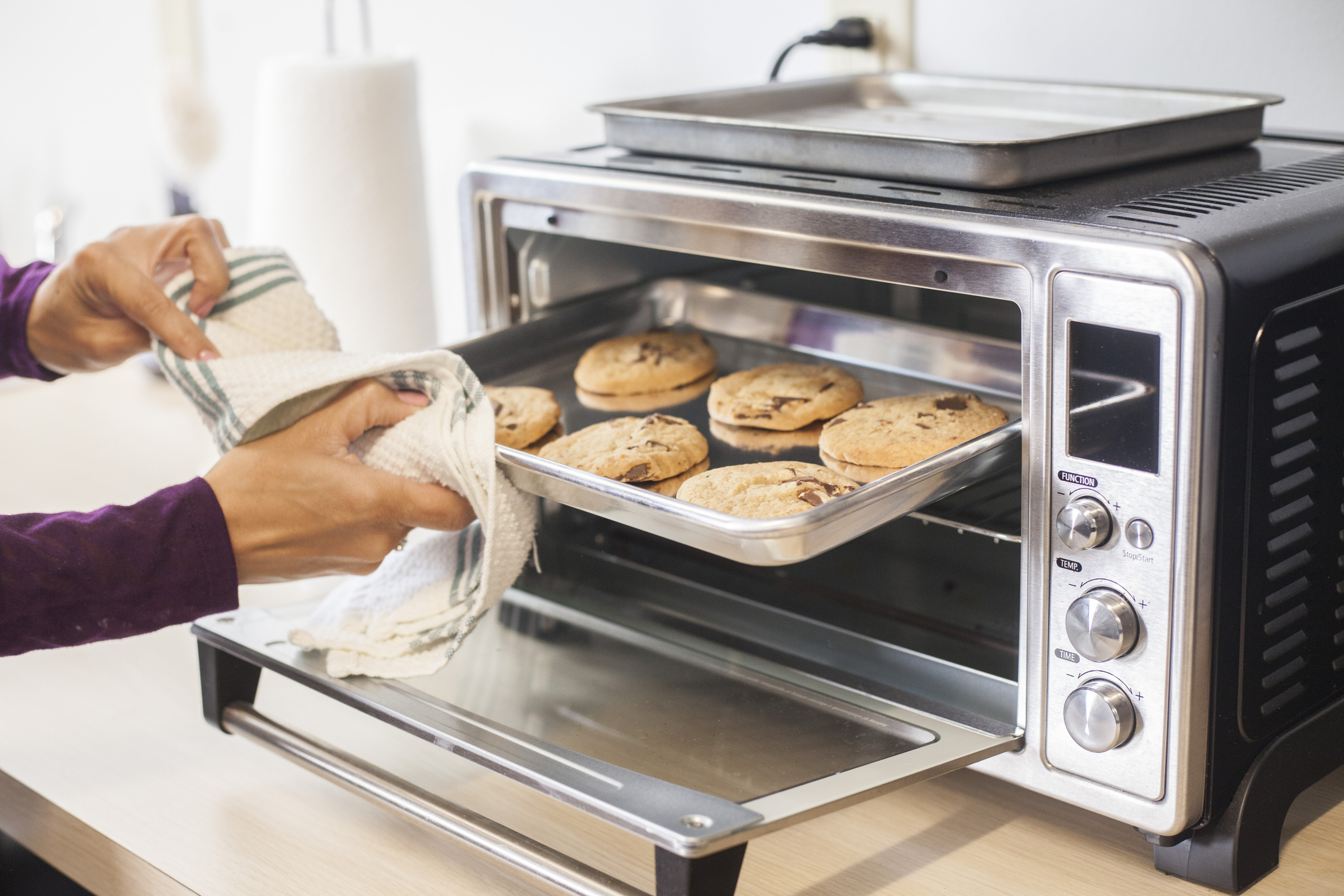
A toaster oven
Countertop convection ovens are a smaller version of an inbuilt convection oven. They are also sometimes known as toaster ovens. However, you can find some conventional toaster ovens which do not have a fan, and therefore are not convection ovens.
3. Air fryers
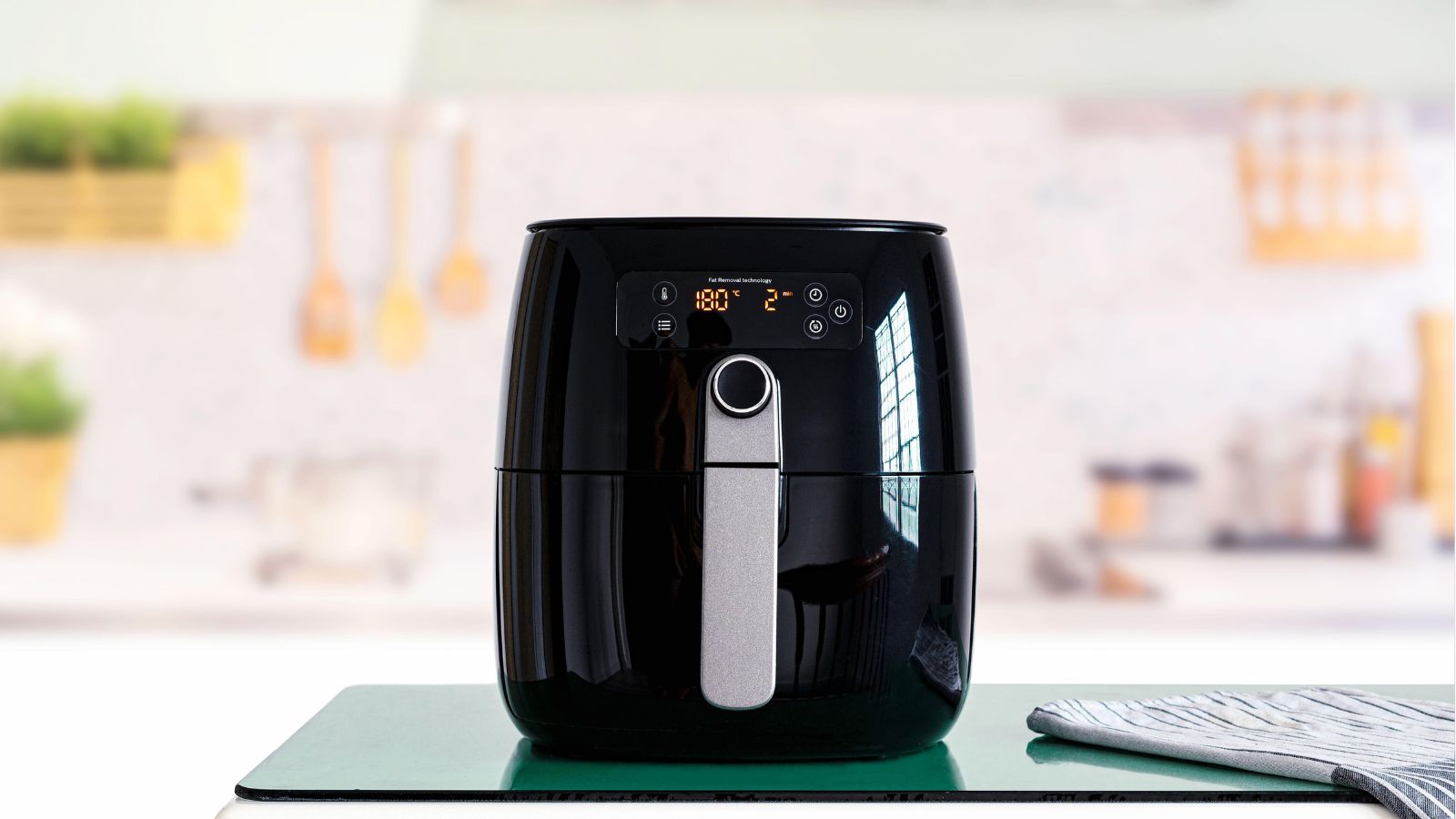
Air fryers are the smallest type of convection oven. They sit on a countertop, and consist of one heating coil at the bottom and one at the top, and a fan which blows heat around.
To demonstrate the difference, here's our favorite air fryer and our favorite convection oven side-by-side, with their key specifications.
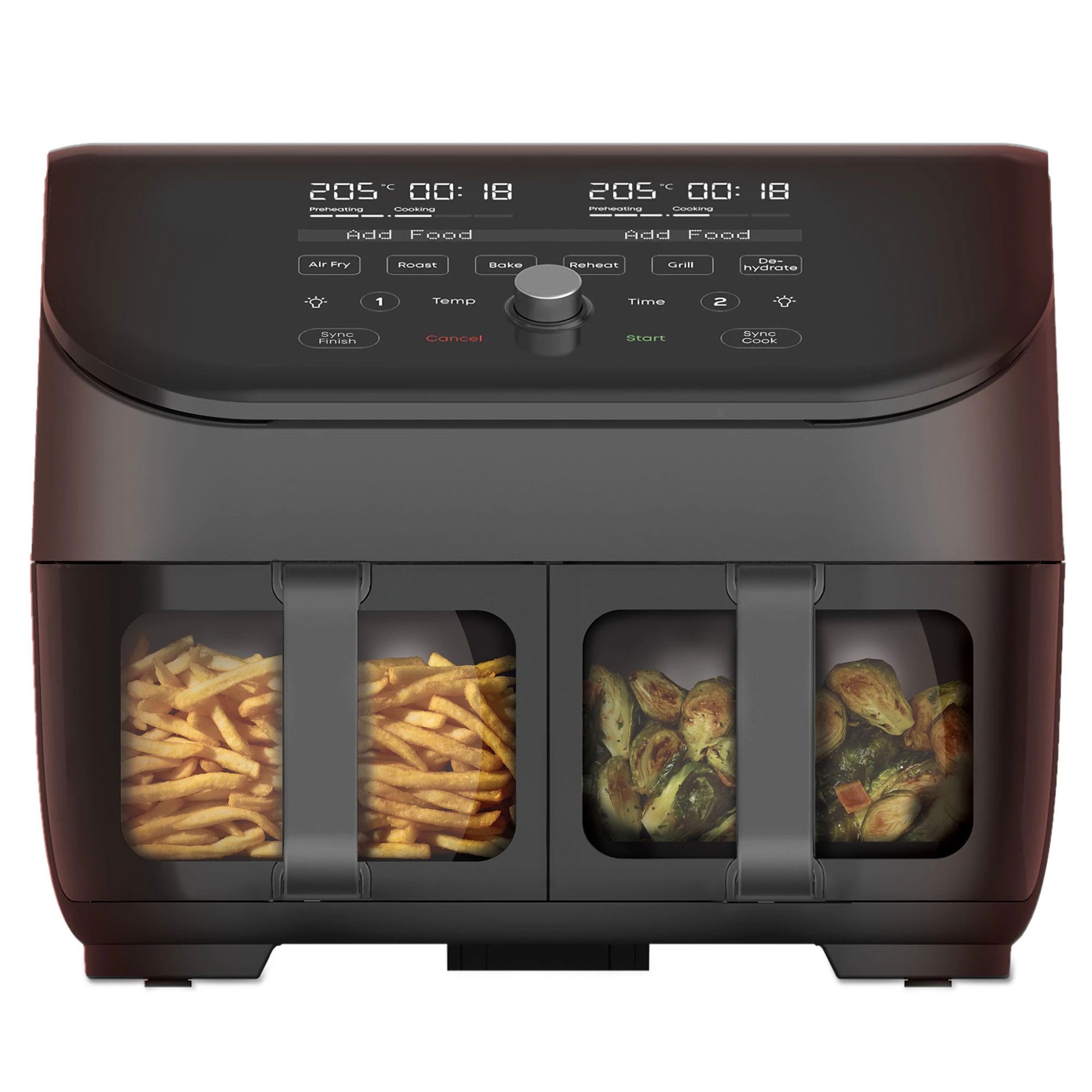
- Capacity: 8 quart
- Cooking modes: Air fry, roast, broil, bake, reheat, and dehydrate, SyncFinish, SyncCook
- Temperature range: 95-400° F (35-204° C)
- Size: 17.8 x 17.5 x 14.8 inches
- Weight: 19.65 pounds
- Cleaning: Nonstick trays and basket, dishwasher-safe inserts
For
- Easy to use
- Removable inserts
- See-through drawers
- Sync to cook
- Match your finish time when cooking whole meals
Against
- Very large
- Quite noisy
- Packaging could be more sustainable
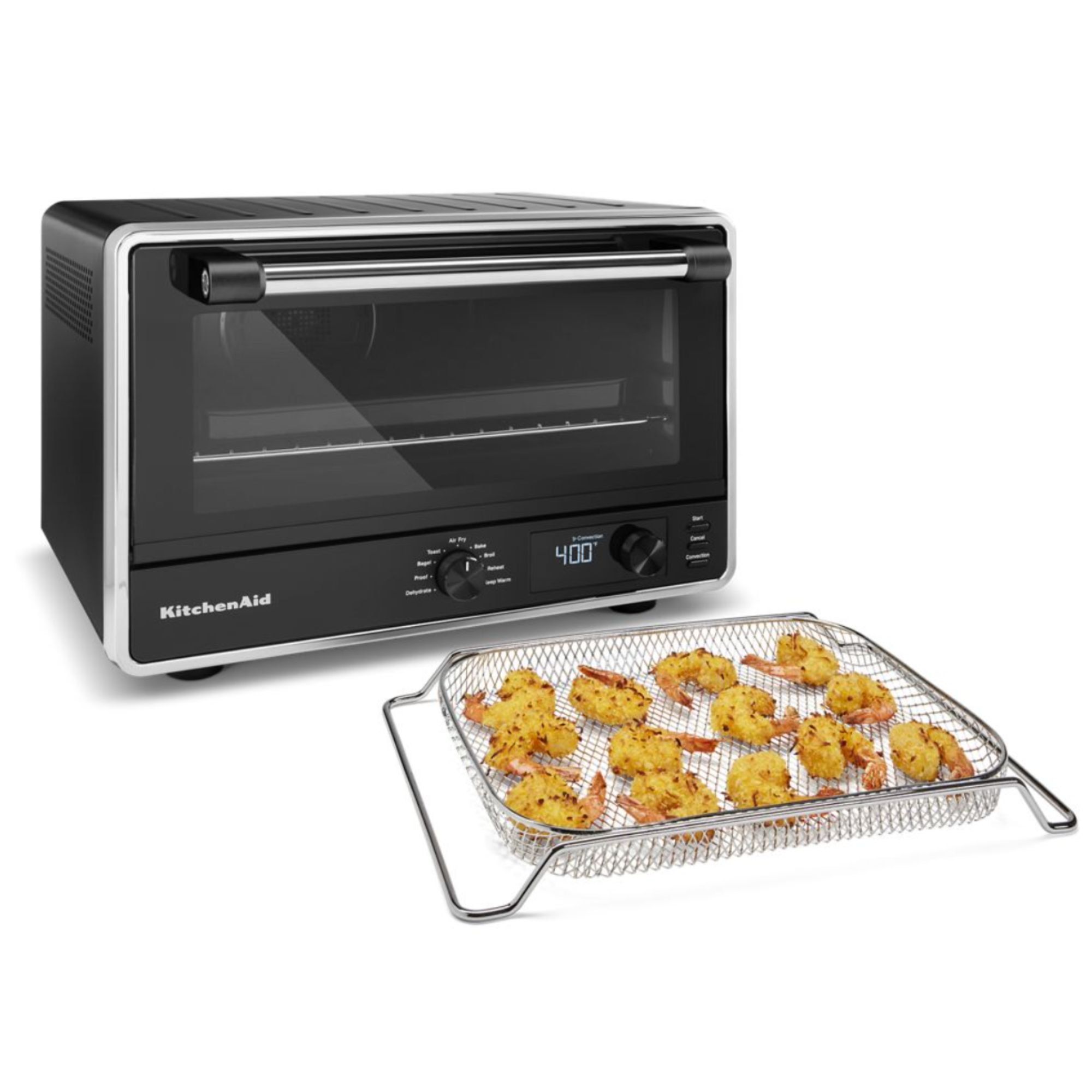
- Capacity: 9 x 13” baking pan, 12" pizza, 2 full size chickens
- Cooking modes: Dehydrate, Proof, Bagel, Toast, Air Fry, Bake, Broil, Air Fry, and Keep Warm
- Temperature range: 80°F-450°F
- Size: 16" x 17" x 11.3"
- Weight: 21 pounds
- Cleaning: Nonstick and dishwasher-safe baskets and inserts
For
- Monitor food as it cooks
- 9 cooking modes: Dehydrate, Proof, Bagel, Toast, Air Fry, Bake, Broil, Air Fry, and Keep Warm
- No flip air fryer
- Sleek interface with not too many buttons
- Large capacity
- Very Versatile
Against
- Interior can get messy when air frying
- Exterior Hot to the touch
- Ending timer is not very loud

- Capacity: 6.3 cu ft
- Cooking modes: Air Fry, Convection, Dehydrator Oven, Range
- Temperature range: not disclosed
- Size: 46.6" x 29.9" x 28.6"
- Weight: 158 lb
- Cleaning: Self-cleaning
For
- Includes a range
- Wifi-connected
- Includes air fry
Against
- Expensive
- Takes up room
- Cost to run
Side by side, you can see that of the two small appliances that the convection oven has a bigger capacity and more functions on offer. It's really just an inbuilt convection oven in miniature.
The air fryer, on the other hand, focuses on speed and fuss free cooking, syncing two different meals to finish at the same time, the toaster oven excels at cooking a wide variety of dishes.
While we haven't tested it, you can see the full size convection oven brings a huge capacity and far more versatility thanks to the range. However, it's a lot more expensive than the small appliances, and costs more to run.
Which is healthier?
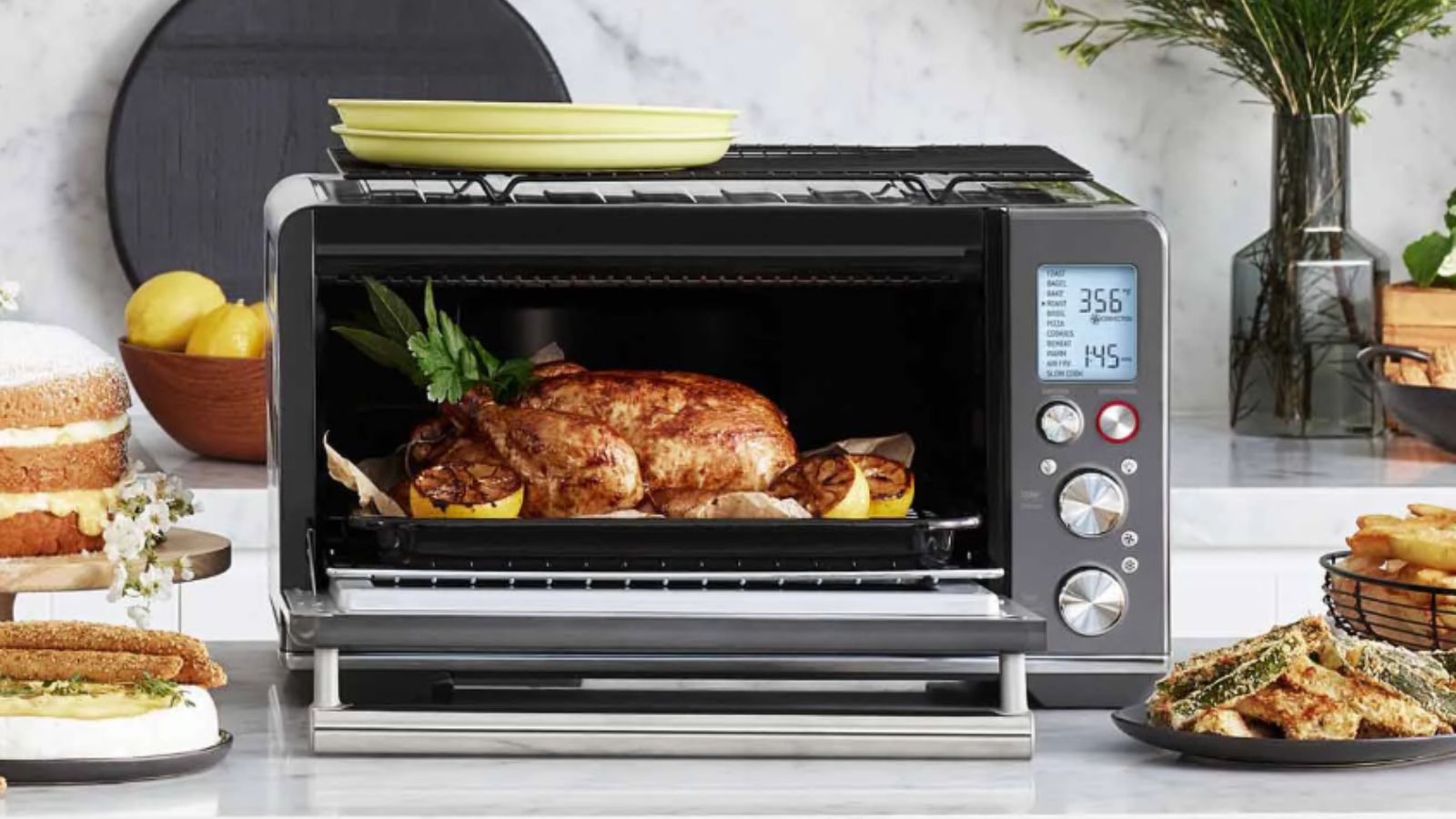
None of these appliances is healthier than the others. It sounds like a a cop-out, but 'healthier' is a very vague term to try to judge an appliance. It also depends on what you cook in it. Any convection oven can only make you as healthy as whatever you cook in it.
The reason air fryers are marketed as 'healthier' as other types of oven is that they need less oil. That's because the fan whips air around the food, cooking more efficiently, so you need less oil. Ultimately, that likely means fewer calories and lower cholesterol, but that's a long way downriver from 'air fryers are healthy.
Which has better energy consumption/usage?
Air fryers are the winner here. These small ovens have a much smaller internal volume than inbuilt convection ovens and countertop convection ovens. That means the heating elements have to heat less air, consuming less electricity.
Which is faster?
This efficiency means in turn that air fryers are fastest. Unlike inbuilt convection ovens and countertop convection ovens, they aren't heating what's effectively surplus air that isn't in contact with your food. Therefore, they cook faster.
Which has more functions?
The two types of mini convection oven seem equally matched, but they aren't. We love air fryers, but they can be a little limited to roasting vegetables and frozen meals. There's not much else worth cooking in it, and this is where a toaster oven shines.
When I last tested a convection ovens a couple weeks ago, I made toast, pizza, fries, crispy bacon, roast vegetables, and cookies. It's more than a day's worth of food all in one appliance. If you want to cook a lot but are tight on space, the convection oven is the way to go.
What's more, convection ovens can also air fry, as the method of cooking (hot air whipped around by a fan) is exactly the same. It's a little less efficient, as countertop convection ovens are bigger, but it works well. If you're choosing between the two, air fryers appear a little redundant.
With that said, modern smart ovens are starting to become very — ahem — smart. The commercial ovens we use in our test kitchen have touch screens and multiple specialised functions, and you can see in the Samsung oven above that it offers air fry and dehydrating modes, as well as a keep warm mode. To be fair, those are all things you can do in any full-size convection oven, but as I haven't seen it in person, I won't judge.
Which is better value?
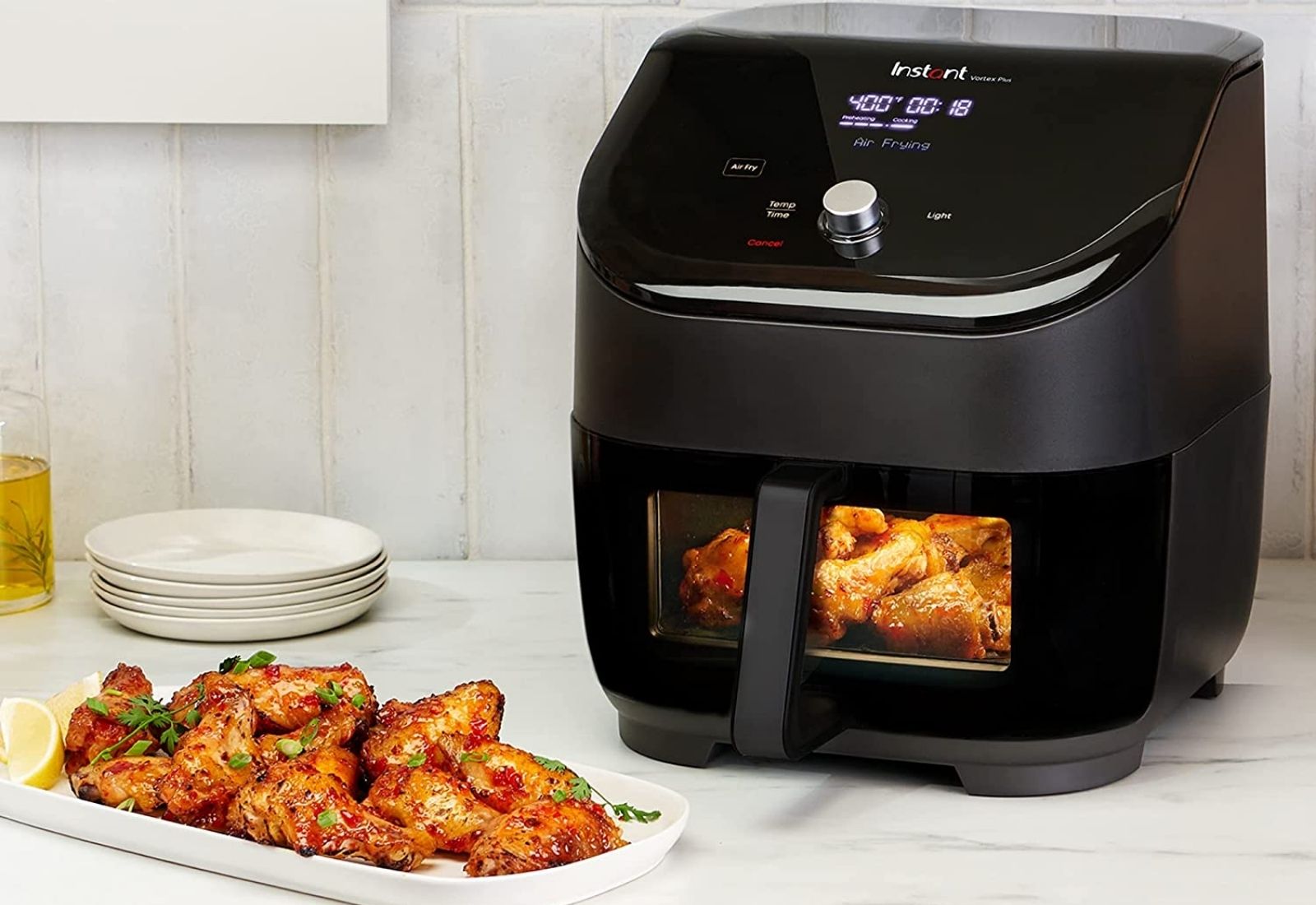
Air fryers tend to be much cheaper than toaster ovens, as they're smaller, and the outside tends to be made of plastic. Countertop convection ovens are larger appliances made of stainless steel, so they inevitably cost more.
For example, our favorite budget air fryer is Drew Barrymore's Beautiful , coming in at under $70. The KitchenAid featured above is one of the more budget-friendly countertop convection ovens, and it costs a couple hundred dollars more. Of course, both are much cheaper than installing a wall or range convection oven.
That said, in the long run I think countertop convection ovens make the most sense financially. They can replace a toaster, microwave, and air fryer all in one go, where an air fryer only shrinks the size of a convection oven.
Verdict: Which should you choose?
Of course, it depends on what you need to cook, but here's some general advice.
Choose an air fryer if you're a couple in a small space. They're perfect for quick and inexpensive meals after work, turning out roast meat, veg, and fries in few minutes.
Choose an countertop oven if you're a family in the suburbs needing lots of different meals quickly. A countertop oven will provide all sorts of meals very quickly. It also makes them a good choice for
Most homes will have a full-size oven built-in. In North America, they tend to be conventional ovens. However, if your current conventional oven has broken down, I'd consider a convection oven instead. They're faster and in the long run will cut down on energy bills as they're more efficient. They also — in my opinion — cook far more evenly, as they aren't radiating heat from the bottom of the oven but evenly spreading it around your food.
Sign up to the Homes & Gardens newsletter
Design expertise in your inbox – from inspiring decorating ideas and beautiful celebrity homes to practical gardening advice and shopping round-ups.

As a gardens and lifestyle contributor, Alex makes sure readers find the right information to help them make the best purchase. Alex got his start in reviewing at the iconic Good Housekeeping Institute, testing a wide range of household products and appliances. He then moved to BBC Gardeners’ World Magazine, assessing gardening tools, machinery, and wildlife products.
-
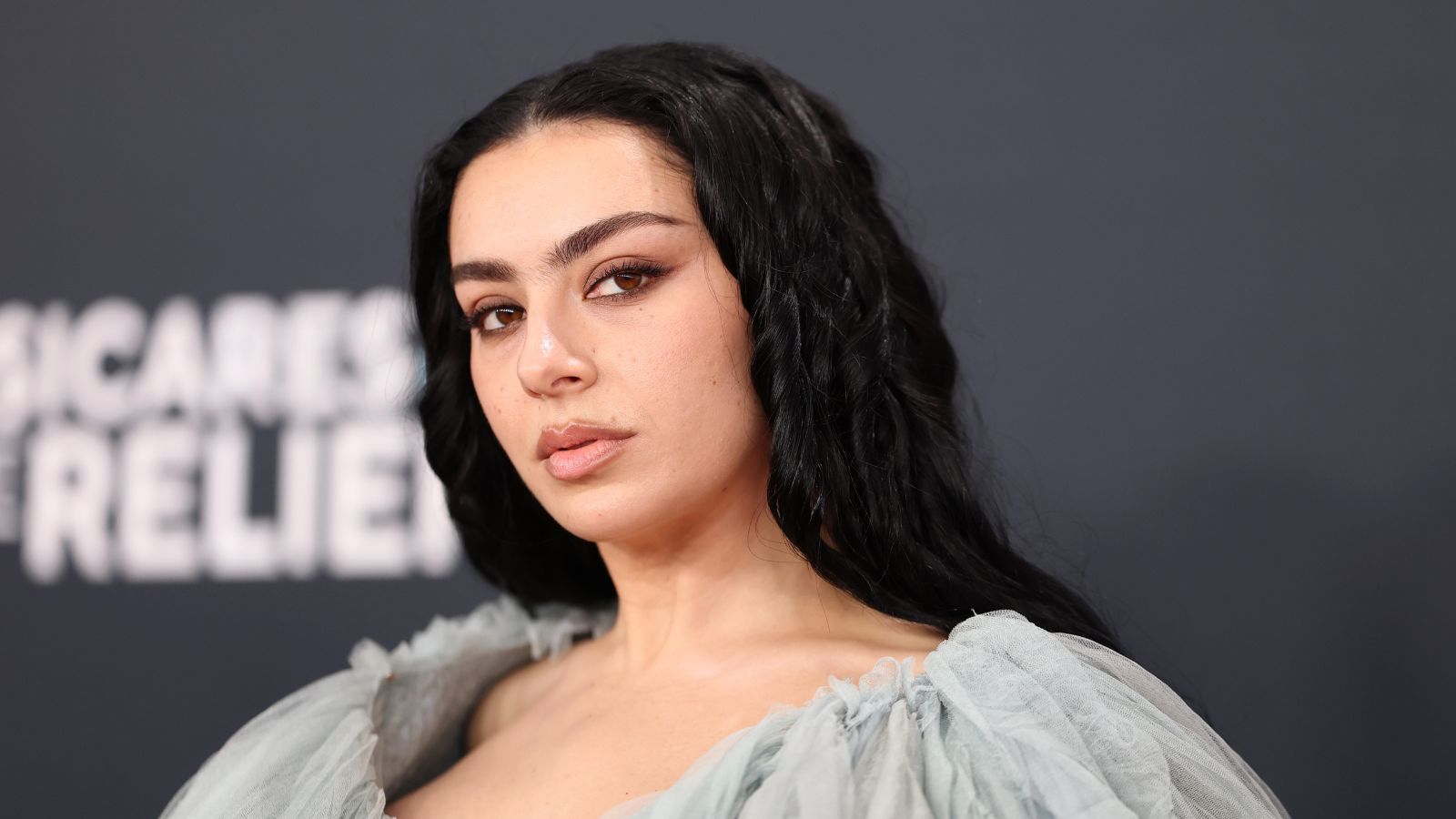 Charli XCX's front door color 'feels deliberate, and almost calculated' – estate experts say it carries authority (but it comes with a warning)
Charli XCX's front door color 'feels deliberate, and almost calculated' – estate experts say it carries authority (but it comes with a warning)The singer's sophisticated front door color gives a 'psychological head start' to sellers, but it has a potentially unlucky downside
By Megan Slack
-
 How to choose eggplant companion plants for abundant and healthy harvests – we reveal 7 of the best to pick, plus the ones to avoid
How to choose eggplant companion plants for abundant and healthy harvests – we reveal 7 of the best to pick, plus the ones to avoidDiscover some beneficial vegetables, herbs, and flowers to grow with eggplant
By Drew Swainston